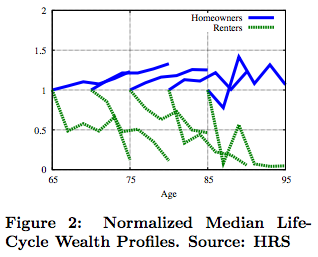Headlines from yesterday's eurogroup summit hitting this morning wires are far from encouraging:
Dutch finance minister Dijsselbloem says Greece may cost extra money
Says: Not in a hurry on Greece.
20 Nov 2012 - Economic commentary -
09:12 EU's Van Rompuy is to present a new EU budget proposal at start of summit
09:03 Greece PM Samaras and EU's Juncker are to meet in Brussels tomorrow
09:00 German Chancellor Merkel tells lawmakers Greece's financing hole through 2016 can be filled with combination of lower rates and increased EFSF according to a source
08:42 According to Schäuble, eurogroup finance ministers and the IMF could not agree how to fill the €14bn shortfall in Athens' finances over the next two years. There was also disagreement on whether Greece had to achieve debt sustainability by 2020 or 2022.
08:26 German finance minister tells lawmakers ECB believes Greece can raise EUR 9bln through T-bill issues according to a source
08:19 German finance minister tells lawmakers it is still open question whether 2020 or 2022 is benchmark for Greek debt sustainability according to a source
... and so on.
It means that the EU is once again finding itself lacking any real means for dealing with the Greek crisis. Here's the summary of what solutions have been floated and why none of them are dealing with the problem at hand:
- Greek haircuts/writedowns (see my note on these here: http://trueeconomics.blogspot.ie/2012/11/15112012-impossibility-of-greek-2020.html) are for now off the table. This is the major problem with the summit. As I explained in my earlier note, Greek crisis cannot be resolved without a major writedown of the Greek debt held by the EFSF and the ECB. 'Major' here references 25% writedown on EFSF and 75% writedown on ECB. Even these levels of writedowns will not bring Greece to 120% debt/GDP limit in 2020.
- The Fin Mins more open to extending Greek debt maturity structure, including doubling these from 15 to 30 years. Assuming this action was interest rate neutral, the resulting reduction in debt financing burden will be minor, and will be offset by the two factors: (1) extending maturity will not make debt levels any lower at any point in time to 2020-2022, so it is hard to see how this measure can have anything but a marginal improvement effect on debt target sustainability for Greece; and (2) extending maturity will make debt profile flatter in period post-2020 or post-2022 depending on which target date you take. In other words, saving a little today will mean longer debt overhang and higher debt levels in the future. Lastly, extending maturity profile will only increase probability of Greek Governments in the future reneging on their budgetary commitments - the longer the enforcement period, the more likely the enforcement will come against future recessionary pressures (we are not abolishing business cycles to 2040 are we?) and/or changes in political outlook.
- The Fin Mins are luke warm to the idea of interest rate reductions on Greek debt held by the EFSF. Currently, Greece is charged ca 3.5% on the EFSF funds it borrows. Cutting these by a half can yield savings of around 3-3.2% of GDP at the peak point for debt. Given current projections, by 2020 these savings can be running at an annual rate of 2.4% of GDP. These are significant - enough to fund current paydowns on the debt that would be consistent with the status quo scenario of dropping Greek debt from ca 180% of GDP to 144% of GDP by 2022. But these will not be enough to cover debt reductions repayments required to drive it down to 120% of GDP.
So here we are: the euro zone's Greek 'can' is now a full oil drum filled with cement and the road is sloping uphill. Good luck kicking…
Now, go back to the drawing board: In the Greek case, OSI is not only unavoidable, it actually might not be enough, if carried via ECB-held debt alone. Which has some seriously grave implications for EFSF and thus to the ESM.
These implications are:
1) Greek restructuring of EFSF-held debts and/or alteration to maturity duration of Greek borrowings from EFSF will mean changes in the ESM profile as well or changes in the ESM position as the ultimate crisis resolution mechanism. For example, if EFSF funds carry maturity of 30 years, ESM either becomes secondary (non-structural) vehicle with lower maturities or it alters its funding maturity to match EFSF. Furthermore, any Greek deal will have to be open to Ireland, Portugal and Cyprus, and potentially to Spain and even Italy.
Now, let me remind you that EFSF/ESM set up is structural to the entire EU response to the crisis (not only Greek case). That's a hefty hurdle to jump: rescue Greece and risk weakening ESM?
2) Lowering interest rates charged on greek debt by official holders - although in itself still a form of restructuring - presents some added risks not mentioned above. Suppose we half Greek current costs of funding to 1.8% or so. Currently, EFSF can borrow at around 1%. But that borrowing rate is not guaranteed. To fund longer maturity for Greece, EFSF/ESM will either have to borrow longer (in which case cost of funding rises) or will have to carry maturity mismatch risk (in which case expected future cost of funding rises). Add to that the fact that current low interest rate environment is most likely abnormal. With these considerations, expected future cost of funding 1.8% loans to Greece might run into negative margin scenario, where ESM funding costs will exceed Greek interest rates.
Worse, one can easily make an argument that ESM funding costs are endogenous to Greek funding costs and to absence of OSI risk. Hence, if Greek situation (and 'no OSI' conditions) deteriorates, ESM cost of funding can rise too.
So far, after yet another eurogroup meeting, we are still where we were - on the road to a spectacular Greek risks unraveling...










